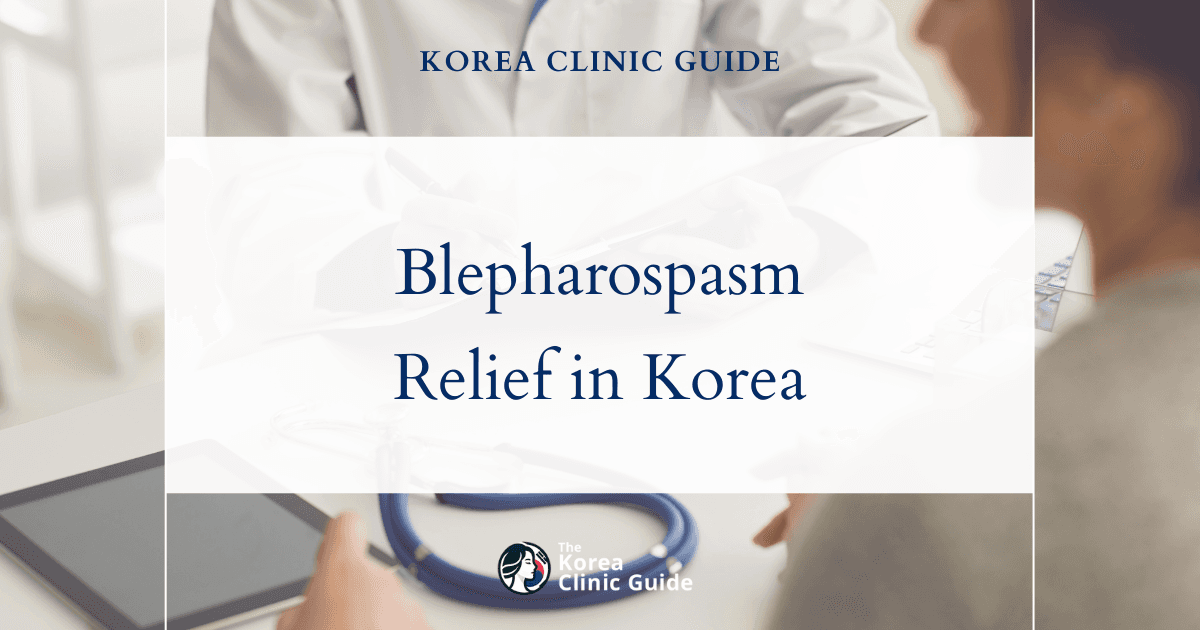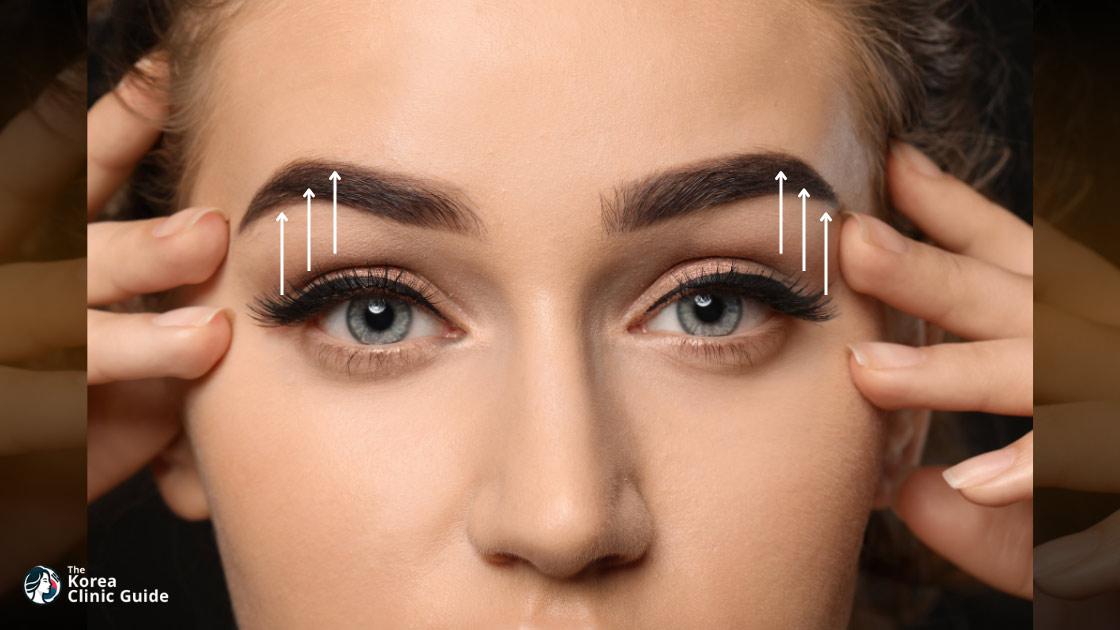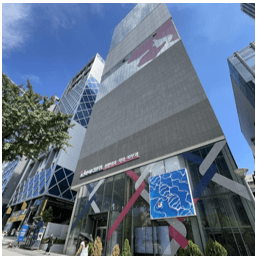Medical Tourism Blog
Canthoplasty in Korea | Best Clinics, Costs, Procedure Types & more
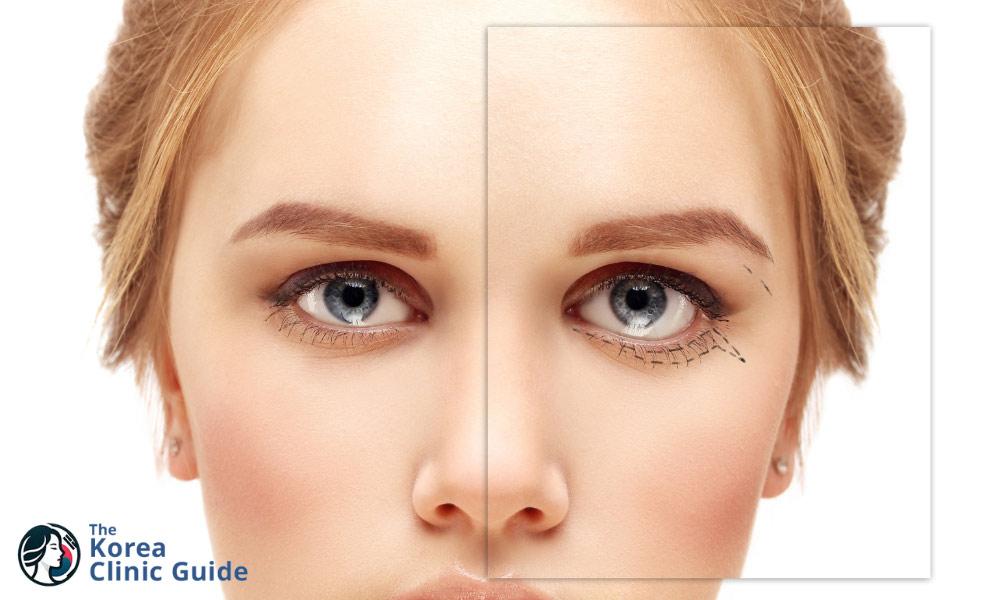
Table of contents
- Canthoplasty Overview
- Best Clinics in Korea for Canthoplasty
- Benefits of Canthoplasty in Korea
- Cost of Canthoplasty in Korea
- Canthoplasty Aftercare and Recovery
- Alternatives to Canthoplasty
- Conclusion
Considering treatment in Korea? Everything you need to know e.g. — how to avoid scams, visas, interpreters, recovery tips — in our Medical Tourism Master Guide. Plan with confidence in minutes, not weeks!
Have you ever wondered how you can achieve that perfectly balanced and youthful eye shape? In the heart of Korea's world-renowned cosmetic surgery landscape, Canthoplasty is taking center stage, offering transformative results with the precision and artistry Korean surgeons are famous for.
Canthoplasty Overview

Canthoplasty, also known as lateral canthoplasty or almond eye surgery, is a surgical procedure that involves modifying the outer corner of the eye (the canthus) to achieve an enhanced, more youthful, or aesthetically pleasing eye shape. This procedure is often sought after by individuals who wish to correct drooping or asymmetrical eyes, create a more elongated and almond-shaped eye, or address functional issues such as eyelid malposition.
In a typical canthoplasty, the outer eye corner is cut and repositioned to tighten the lower eyelid, elevate it, or create a different contour. The surgery is usually performed under local anesthesia with sedation, though general anesthesia may sometimes be used depending on the complexity of the case and the patient’s preference.
Types of Canthoplasty

-
Lateral Canthoplasty: This common form focuses on the outer canthus, aiming to lift and tighten the outer corner of the eyelid. It is often employed to address conditions such as ectropion (outward turning of the eyelid) or entropion (inward turning of the eyelid), as well as cosmetic purposes.
-
Epicanthoplasty: Though not always classified strictly as a canthoplasty, this procedure involves the inner canthus area, often combined with other eyelid surgeries to reduce the epicanthal fold for a more open eye appearance.
Procedure Steps
- Incision: The surgeon makes a small incision at the outer corner of the eye.
- Repositioning: The lower eyelid tendon (lateral canthal tendon) is carefully cut and repositioned to the desired heightened level.
- Tightening: The eyelid is then tightened, and any excess skin or tissue may be trimmed.
- Suturing: The new eye contour is secured with fine sutures to ensure minimal scarring and optimal healing.
- Closing: The incision is closed, and a temporary eye patch may be applied to protect the area during the initial healing phase.
Indications for Canthoplasty
- Cosmetic Reasons: Enhancing eye shape and size, achieving a more youthful appearance, and correcting asymmetries.
- Functional Reasons: Addressing eyelid malpositions that might cause irritation, tearing, or impaired vision.
- Reconstructive Needs: Correcting congenital defects or outcomes from previous surgeries or traumas.
Recovery and Aftercare
Post-operative care is crucial for ensuring the best outcomes. Patients can generally expect some swelling, bruising, and mild discomfort, which typically resolves within a few weeks. Specific aftercare instructions, like avoiding strenuous activities, keeping the head elevated, and using prescribed eye ointments or drops, are essential for proper healing. Regular follow-up appointments with the surgeon will monitor progress and catch any complications early.
Risks and Complications
As with any surgical procedure, canthoplasty carries some risks, including infection, scarring, asymmetry, under-correction or over-correction, and improper healing. Choosing a skilled and experienced oculoplastic surgeon significantly mitigates these risks.
Canthoplasty Procedure
Canthoplasty is a surgical procedure aimed at reconstructing the lateral canthus (the outer corner of the eye) to improve or change the eye's shape and contour. Here’s a detailed breakdown of the canthoplasty procedure:
-
Initial Consultation:
- The process begins with a thorough consultation with the surgeon, where the patient’s medical history and expectations are discussed. The surgeon evaluates the patient's eye structure to determine the most appropriate surgical approach.
-
Preoperative Preparation:
- Prior to surgery, the patient may need to undergo several medical tests to ensure they are a good candidate for the procedure. The surgeon will provide detailed instructions regarding what to do before the surgery, such as avoiding certain medications and fasting if necessary.
-
Anesthesia:
- Canthoplasty is usually performed using either local anesthesia with sedation or general anesthesia, depending on the complexity of the procedure and patient preference.
-
Incision:
- The surgeon makes a small incision at the outer corner of the eye. This incision is strategically placed to minimize visible scarring.
-
Adjusting the Canthus:
- The key part of the procedure involves tightening and reinforcing the lateral canthal tendon. This adjustment helps to reshape the eye, creating a more youthful and aesthetic appearance.
-
Suturing:
- Once the desired eye shape is achieved, the surgeon carefully stitches the incision closed. Fine sutures are typically used to promote healing and reduce scarring.
-
Postoperative Care:
- After the surgery, patients are given specific postoperative care instructions, which may include how to clean the eye area, taking prescribed medications to manage pain and prevent infection, and follow-up appointments to monitor the healing process.
-
Recovery:
- Recovery time varies, but most patients can return to their normal activities within a week or two. It is crucial to follow the surgeon's instructions during the recovery period to ensure optimal results and minimize complications.
Canthoplasty is known for its high precision and effectiveness in enhancing the aesthetic and functional aspect of the eyes. When looking to undergo this procedure in Korea, it is important to choose a reputable clinic and an experienced surgeon to ensure the best possible outcomes.
Who is Canthoplasty for?
- Individuals looking to improve the appearance or shape of their eyes.
- Patients with droopy or saggy eyelids.
- People experiencing asymmetry in their eye shapes.
- Individuals seeking to correct congenital eyelid abnormalities.
- Those wanting to enhance the appearance of the outer corners of their eyes.
- Patients who have undergone previous eyelid surgeries and are seeking revisions.
- People experiencing functional issues due to the position or shape of their eyelids.
- Individuals interested in an anti-aging eye surgery to refresh their look.
Best Clinics in Korea for Canthoplasty
Listed below are the best clinics in Korea for canthoplasty:
| Clinic Name | Key Features | Special Techniques |
|---|---|---|
| THEPLUS Plastic Surgery | World-renowned board-certified surgeons, cutting-edge facilities, four floors dedicated to comprehensive care, seamless patient journey, active research and innovation, personalized approach | Advanced facial contouring by Dr. Kim Taek Kyun, results merging function with beauty led by Dr. Jeong Jae Yong, techniques developed and refined by a globally recognized team |
| Made Young Plastic Surgery | Over 15 years of eye surgery expertise, direct consultation with experienced medical team, board-certified anesthesiologist, 1:1 monitoring, procedural CCTV, award-winning ethics and satisfaction, dedicated aftercare center | Personalized canthoplasty techniques, customized incision lines, tailored double eyelid height and thickness, systematic post-op care, specialized in natural and beautiful immediate outcomes |
| Okay Plastic Surgery Clinic | Sincere and individualized treatment, renowned female plastic surgeon, holistic patient experience, full range of aesthetic solutions (eye surgery, body contouring, breast, hairline, facial, rhinoplasty, scar management, skincare), advanced medical technology | Meticulous and tailored canthoplasty, comprehensive approach to personal transformation, precise surgical techniques across a spectrum of procedures |
THEPLUS Plastic Surgery
THEPLUS Plastic Surgery stands out as the top clinic for canthoplasty in Korea, thanks to its world-renowned team of board-certified surgeons, cutting-edge facilities, and an unwavering commitment to patient safety and satisfaction. Led by Dr. Kim Taek Kyun, an internationally recognized expert in facial contouring and a leader in education for fellow surgeons, THEPLUS upholds the highest standards in aesthetic surgery. Dr. Jeong Jae Yong, the current President of the Korean Society of Plastic Surgeons, combines advanced technical skills with a deeply rooted philosophy of merging function with beauty, delivering results that are both naturally beautiful and medically sound. The clinic also benefits from the expertise of Dr. Lee, whose extensive surgical experience at top institutions ensures meticulous, long-lasting outcomes for every patient. With four floors dedicated exclusively to comprehensive care from consultation to post-op skincare, THEPLUS creates a seamless and comfortable journey for clients. The clinic’s surgeons are not just practitioners but pioneers, regularly publishing influential research and participating in global medical forums, which keeps their practice at the forefront of innovation. Above all, THEPLUS Plastic Surgery is defined by its personalized approach, prioritizing harmonious facial results that enhance each patient’s natural features while maintaining the utmost standards in safety and satisfaction—making it the leading destination for canthoplasty and advanced aesthetic procedures in Korea.
You can check out their website here: THEPLUS Plastic Surgery Website
Made Young Plastic Surgery
Made Young Plastic Surgery Clinic stands out as Korea’s premier destination for canthoplasty thanks to its unparalleled expertise, patient-centered philosophy, and comprehensive safety and aftercare systems. Led by Dr. Park Byung-Chan, who has devoted over 15 years solely to eye surgeries, the clinic is famed for producing natural, beautiful results—often immediately noticeable even on the day of surgery. Dr. Park’s meticulous approach personalizes every aspect, from incision lines to double eyelid height and eyelid thickness, tailoring each procedure to the patient's individual facial features for the most harmonious outcome. Patients at Made Young benefit from direct consultations with an elite medical team averaging more than 15 years of experience, a robust safety protocol featuring board-certified anesthesiologists and dedicated 1:1 monitoring, and a transparent process with full procedural CCTV coverage. The clinic’s commitment doesn’t end after the surgery; a dedicated aftercare center ensures thorough, systematic postoperative care for optimal recovery and results. Recognized both for excellence (notably winning the 2022 Korea No.1 Award and Korea Customer Satisfaction 1st Place) and ethical standards, Made Young seamlessly combines medical artistry with proven safety and genuine compassion—making it the top choice for canthoplasty and other advanced eye procedures in Seoul, Korea.
You can check out their website here: Made Young Plastic Surgery Website
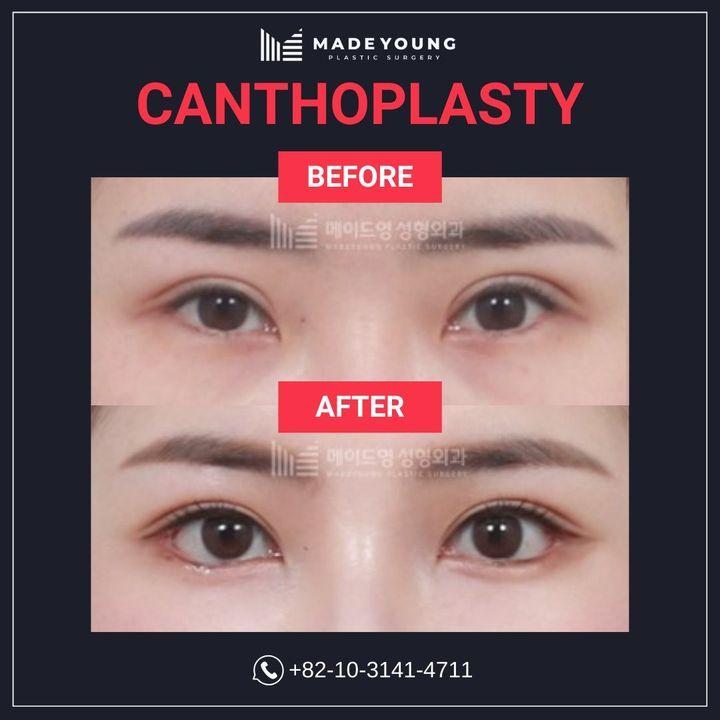
Okay Plastic Surgery Clinic
Okay Plastic Surgery Clinic stands at the forefront of aesthetic medical care in Korea, offering a comprehensive range of specialized eye surgery procedures, including canthoplasty, that are meticulously tailored to meet each patient’s unique goals and anatomy. Guided by experienced professionals such as a renowned female plastic surgeon, our clinic is distinguished by its commitment to sincerity, precision, and individualized treatment. We believe in going beyond simple procedures to create a holistic experience of personal transformation, all while utilizing advanced surgical techniques and the latest medical technology.
Our services extend far beyond eye surgery, encompassing a full spectrum of aesthetic solutions—ranging from body contouring and breast augmentation to hairline correction, facial rejuvenation, rhinoplasty, scar management, and customized skincare. At Okay Plastic Surgery, every patient is welcomed into a journey guided by expertise, empathy, and a dedication to delivering natural and satisfying results. Whether seeking subtle enhancements or comprehensive changes, patients can expect attentive care and outcomes that align with their desires for beauty, confidence, and well-being.
You can check out their website here: Okay Plastic Surgery Clinic Website
Benefits of Canthoplasty in Korea
Canthoplasty, a surgical procedure aimed at reshaping the outer corners of the eyes, is increasingly popular in Korea for a number of compelling reasons. The benefits of getting Canthoplasty in Korea include the following:
World-Class Surgeons
Korea is renowned for its highly skilled plastic surgeons who have extensive experience in performing Canthoplasty. Many of these medical professionals have been trained in top institutions both locally and internationally. Their expertise ensures high-quality surgical results and minimizes potential risks or complications.
State-of-the-Art Facilities
Korean clinics are equipped with the latest technology and state-of-the-art facilities, ensuring that patients receive the best possible care. This includes advanced diagnostic tools, cutting-edge surgical equipment, and comfortable recovery rooms to enhance the overall patient experience.
Customized Procedures
Korean plastic surgery clinics offer highly personalized services. Surgeons in Korea take the time to understand each patient's unique needs and aesthetic goals, tailoring the Canthoplasty procedure accordingly. This personalized approach often results in more natural-looking and satisfactory outcomes.
Comprehensive Post-Operative Care
Post-operative care is crucial for the success of any surgical procedure, and Korean clinics excel in this regard. Patients often receive comprehensive aftercare packages that include follow-up consultations, medications, and even specialized skincare treatments to ensure optimal healing and results.
Affordability
Compared to Western countries, the cost of Canthoplasty in Korea is relatively affordable. Despite the high quality of care and advanced medical technology available, the overall expenses are often lower, making it an attractive option for international patients seeking world-class results without breaking the bank.
Cultural Expertise
Korea's extensive experience and cultural understanding of beauty standards make it a favorable destination for Canthoplasty. Surgeons in Korea are adept at creating eye shapes that align with both local and global beauty trends, crafting results that are aesthetically pleasing and harmonious with the patient's facial features.
Quick Recovery Time
Many Korean clinics employ advanced surgical techniques that promote quicker recovery times. Patients can often return to their normal activities faster than they might expect, which is a significant advantage for those with busy lifestyles or those traveling from abroad.
High Patient Satisfaction
Due to the combination of skilled surgeons, advanced technology, and personalized care, patient satisfaction rates for Canthoplasty in Korea are exceptionally high. Many patients report positive experiences and are pleased with the results of their surgery, often recommending Korean clinics to friends and family.
Medical Tourism Support
Korea has a well-developed infrastructure to support medical tourism. This includes assistance with travel arrangements, language translation services, and comfortable accommodation options, making the entire process more convenient and stress-free for international patients.
| Procedure Price | Korean Won (₩) | USD ($) |
|---|---|---|
| Low Price | ₩1,500,000 | $1100 |
| High Price | ₩5,000,000 | $3600 |
Exchange rate as of 2025-05-22: 1 KRW = 0.0007 USD
Please note that these prices are approximate guidelines and can vary significantly based on the clinic and your individual circumstances.
Cost of Canthoplasty in Korea
The cost of canthoplasty in Korea can vary depending on the clinic, the surgeon's expertise, and the specific needs of the patient. On average, the procedure can range from $1,500 to $3,000 USD. This price often includes consultation fees, the surgical procedure itself, and post-operative care.
In comparison, canthoplasty in the USA tends to be significantly more expensive. The cost in the United States generally ranges from $4,000 to $8,000 USD, and in some cases, it may even go higher depending on the surgeon's reputation and the location of the clinic.
One of the primary reasons it is beneficial to travel to Korea for canthoplasty is the lower cost without compromising on the quality of care. Korean plastic surgeons are well-known for their expertise and precision in cosmetic procedures, including canthoplasty. Moreover, many clinics in Korea offer comprehensive packages that include accommodation, transportation, and translation services, making the overall experience smoother and more convenient for international patients.
Additionally, Korea is renowned for its advanced medical infrastructure, state-of-the-art technology, and high standards of hygiene and patient care. These factors contribute to a higher success rate and greater patient satisfaction, making Korea a popular destination for medical tourism.
Canthoplasty Aftercare and Recovery
Proper aftercare is crucial for achieving the best possible results following canthoplasty, a surgical procedure that alters the shape or position of the canthus (corner) of the eye. The recovery period involves several key steps and precautions:
-
Immediate Post-Surgery Care:
- Cold Compresses: Applying cold compresses to the eyes can help reduce swelling and bruising during the first 48 hours after surgery.
- Pain Management: Over-the-counter pain relief medications, as prescribed by your surgeon, can help manage discomfort. Avoid aspirin as it can increase bleeding risk.
-
Hygiene and Wound Care:
- Cleaning: Gently clean the surgical area with a saline solution to prevent infection.
- Antibiotic Ointment: Apply any prescribed antibiotic ointment to the incision site to prevent infections and aid healing.
-
Activity Restrictions:
- Avoid Straining: Refrain from any activities that may strain the eyes, such as heavy lifting, vigorous exercise, or prolonged reading and screen time.
- Head Elevation: Keeping your head elevated, even while sleeping, can help minimize swelling.
-
Follow-Up Appointments:
- Regular Check-Ups: Attend all scheduled follow-up appointments with your surgeon to monitor the healing process and address any complications promptly.
-
What to Avoid:
- Eye Rubbing: Do not rub or touch your eyes to avoid disturbing the healing incisions.
- Makeup and Contact Lenses: Avoid applying any makeup or using contact lenses until your surgeon gives you the go-ahead, as these can irritate the sensitive areas around your eyes.
-
Healing Timeline:
- Initial Healing: Swelling and bruising typically subside within 1 to 2 weeks.
- Full Recovery: Complete healing and final results can take several months, although most people can resume normal activities within a month, depending on their surgeon's advice.
By following these aftercare guidelines, patients can promote proper healing and achieve the best aesthetic outcomes from their canthoplasty procedure.
Alternatives to Canthoplasty
While Canthoplasty is a popular surgical procedure to change the shape and size of the eyes, there are several alternatives that might be suitable based on individual needs and desired outcomes. Below are three recommended alternatives to Canthoplasty, explaining their purpose and how they differ from Canthoplasty.
1. Blepharoplasty
Blepharoplasty, commonly known as eyelid surgery, is performed to remove excess skin, fat, or muscle from the upper or lower eyelids. This procedure can improve the appearance of droopy eyelids, and it might also enhance peripheral vision by removing obstructing tissue.
- Upper Blepharoplasty: This focuses on the upper eyelids and is often performed for cosmetic reasons or to improve vision.
- Lower Blepharoplasty: This targets puffiness and bags under the eyes, providing a refreshed and youthful look.
2. Brow Lift
A Brow Lift, also known as a forehead lift, elevates the brow line to create a more youthful and rejuvenated appearance. This procedure can effectively reduce wrinkles and frown lines on the forehead and improve the overall symmetry of the eyebrows.
- Coronal Brow Lift: Involves an incision from ear to ear across the top of the head, lifting the forehead and brow.
- Endoscopic Brow Lift: A less invasive option using small incisions and an endoscope to lift the brow.
3. Epicanthoplasty
Epicanthoplasty is a cosmetic surgery aimed at modifying the inner corners of the eyes to create a larger and more open appearance. This procedure is particularly popular in East Asian countries where people seek to achieve a more "Western" eye shape.
- Medial Epicanthoplasty: Focuses on the inner corners of the eyes and is often combined with double eyelid surgery for optimal results.
- Lateral Epicanthoplasty: Targets the outer corners of the eyes, although it is less commonly performed compared to medial epicanthoplasty.
Each of these alternatives offers unique benefits and can be tailored to meet the specific aesthetic goals and medical needs of the individual. Consulting with a qualified plastic surgeon will help determine the most appropriate course of action.
Conclusion
In conclusion, Canthoplasty in Korea has emerged as a sought-after procedure due to the nation's advanced medical technology, skilled surgeons, and competitive pricing. With a focus on achieving natural and harmonious results, Korean aesthetic clinics emphasize patient safety and satisfaction, making them a popular destination for both local and international patients seeking eye enhancement surgeries. The combination of expertise, state-of-the-art facilities, and a patient-centric approach ensures that individuals can achieve their desired aesthetic outcomes with minimal risks and complications, reaffirming Korea’s status as a global leader in cosmetic surgery.

